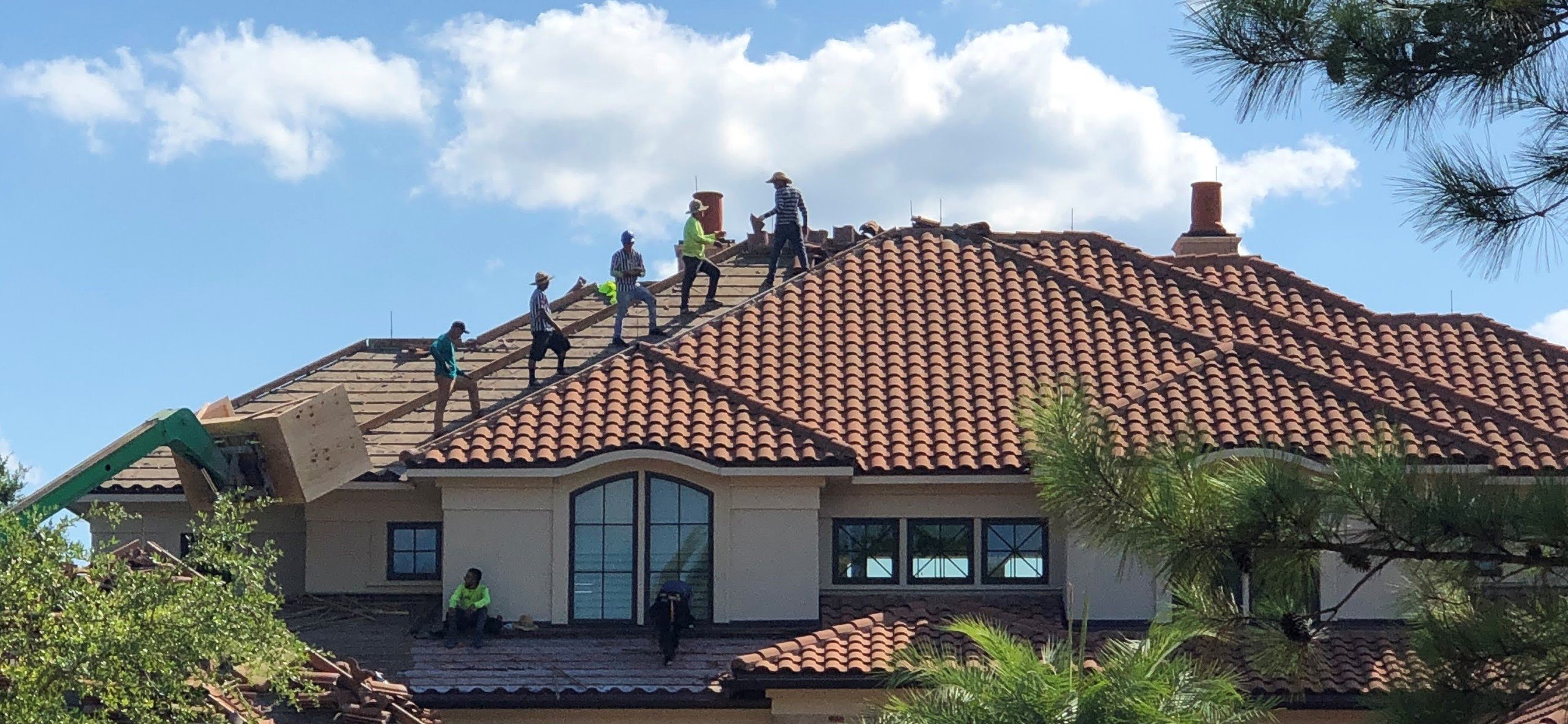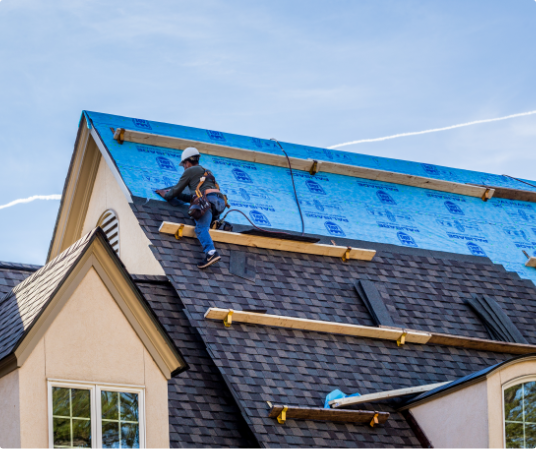Best Practices for Ensuring Appropriate Roof Ventilation
A well balanced consumption and exhaust vent ratio, commonly 1:300, plays a critical role, with consumption vents preferably positioned at the lower edge of the roofing system for awesome air access and exhaust vents at the height for warm air exit. Keeping insulation away from vents is essential to prevent air movement restriction.
Understand Air Flow Essentials
Properly comprehending ventilation fundamentals is crucial for ensuring the longevity and performance of roofing systems. Efficient air flow minimizes moisture build-up and temperature extremes in the attic, both of which can lead to substantial structural damages over time. A well-ventilated roofing system assists in stopping typical concerns such as mold and mildew growth, wood rot, and ice dams, which can endanger the integrity of the roofing materials and the underlying structures.
The key objective of air flow is to help with the motion of air, enabling a regular exchange between the outside and indoor atmospheres. This equilibrium is achieved via a mix of intake and exhaust vents that collaborate to maintain optimum airflow. Intake vents, commonly situated along the soffits or eaves, permit fresh air to enter the attic area, while exhaust vents, usually positioned at or near the roof ridge, enable hot, moist air to get away.
Trick aspects influencing the performance of roof covering air flow include correct positioning, ample sizing, and making sure that both intake and exhaust vents are unblocked. Regular assessment and maintenance are important to identify prospective blockages, damage, or inadequacies in the ventilation system, consequently protecting the roof's performance and resilience.
Types of Roofing Vents
Roof vents play a crucial function in preserving efficient attic room ventilation and, by extension, the overall wellness of the roof. Different kinds of roof vents are available, each with unique advantages tailored to particular roof covering requirements. Ridge vents, for instance, are installed along the roof's height, allowing warm, damp air to escape from the attic. They supply continuous ventilation and mix seamlessly with the roofline, making them both efficient and visually pleasing.

Soffit vents are set up under the eaves and operate in tandem with roofing vents to ensure a balanced intake and exhaust system. By enabling cooler air to enter from below, soffit vents assist in the expulsion of hot air with top vents. Gable vents, located on the exterior walls of the attic room, deal an additional effective solution, particularly in homes with saddleback roofs.
Evaluate Your Existing Ventilation

Next, take into consideration the age and condition of your roofing products and ventilation components. Older systems might not follow existing building ordinance or may have degraded gradually, decreasing their performance. Conduct a thorough examination to identify any indicators of wear and tear, such as corrosion, damages, or gaps that could endanger the system's performance.
Additionally, determine the attic temperature level and moisture degrees. High temperatures and humidity can suggest insufficient air flow.
Installment Best Practices
Reliable installment of roofing ventilation systems is critical for guaranteeing optimum performance and longevity. Appropriate installation begins with understanding the details ventilation needs of the structure and the roof official site it covers. This involves determining the correct proportion of consumption to tire vents, commonly sticking to the 1:300 rule, which stipulates one square foot of air flow for every single 300 square feet of attic flooring area.

Consumption vents must be mounted at the roof's reduced side, usually in the soffits, to allow great air to get in. Exhaust vents, on the various other hand, ought to be mounted near or at the roof covering's peak to promote the leave of cozy, damp air.
Seal all vent connections thoroughly to prevent air leaks and possible water infiltration. Use premium materials and adhere to supplier guidelines to make sure sturdiness and efficiency. Additionally, incorporating ridge vents with baffles can dramatically improve air flow effectiveness by avoiding wind-driven rainfall and snow from entering the attic.
Ultimately, exact installment of roof air flow systems alleviates prospective problems such as mold and mildew development, ice dams, and structural damages, making sure the roof covering's integrity and the structure's general wellness.
Normal Maintenance Tips
Consistency in maintenance techniques is fundamental to making sure the lasting performance of roof ventilation systems. Normal assessments are essential, preferably performed biannually-- in the springtime and loss. During these examinations, ensure that vents are devoid of debris, nests, and other obstructions that can hamper air movement. Check for any signs of moisture buildup or mold, as these can suggest incorrect air flow or leakages (roofing companies).
Cleaning up the vents is another essential task. Use a soft brush or a vacuum cleaner to remove dust and debris from intake and exhaust vents. Be cautious not to damage the air vent displays or louvers throughout the procedure. Furthermore, inspect the attic space for any indications of water damages, which might endanger the honesty of the roof.
Correct insulation is equally vital. check here Make sure that attic room insulation does not block the vents, as this can seriously limit air movement. If any kind of insulation has shifted or settled, reposition or change it to maintain an effective barrier.
Finally, replace any kind of damaged or missing out on components without delay. Busted vents, split shingles, or shabby flashing can all add to poor ventilation and ought to be addressed right away. Regular maintenance ensures that the roof covering air flow system operates ideally, thereby prolonging the life-span of the roof covering itself.
Verdict
Ensuring appropriate roof covering ventilation is critical for maintaining go to this web-site the performance and sturdiness of a roof. Adherence to the 1:300 intake and exhaust air vent ratio, paired with the calculated placement of vents, is essential. Regular biannual inspections, particles cleaning, and making sure insulation does not block airflow are critical methods. Executing these best techniques will foster a well-ventilated roof, thereby minimizing prospective problems connected to moisture buildup and too much warmth, ultimately extending the roof's life-span.
A balanced consumption and exhaust air vent proportion, commonly 1:300, plays an essential role, with intake vents preferably put at the lower edge of the roof covering for awesome air entry and exhaust vents at the peak for cozy air exit. Intake vents, typically situated along the soffits or eaves, enable fresh air to go into the attic room area, while exhaust vents, typically positioned at or near the roofing ridge, allow warm, moist air to escape.
Soffit vents are mounted under the eaves and work in tandem with roof covering vents to guarantee a balanced consumption and exhaust system. By permitting cooler air to get in from below, soffit vents promote the expulsion of warm air via upper vents. Adherence to the 1:300 intake and exhaust air vent ratio, paired with the calculated positioning of vents, is necessary.